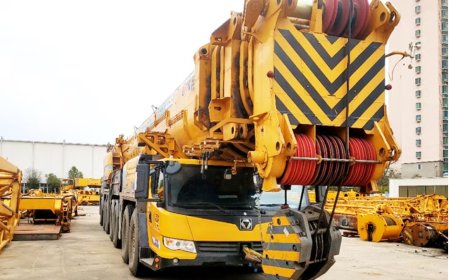How to Launch Your Own DePIN Solution and Compete in the Web3 Infrastructure Race

Decentralized Physical Infrastructure Networks (DePINs) are emerging as one of the most promising sectors in the Web3 ecosystem. By fusing real-world infrastructure with blockchains decentralization and token incentives, DePIN solutions are disrupting traditional infrastructure monopolies and democratizing access to resources like compute, storage, sensors, and wireless networks. From projects like Helium building decentralized wireless coverage to Render Network revolutionizing GPU compute access, the DePIN movement is rapidly gaining momentum among developers, investors, and users alike.
In 2025, launching a DePIN project isnt just about having a novel idea. It requires strategic planning, deep technical understanding, robust tokenomics, and a community-first approach. This guide will walk you through the full lifecycle of launching your own DePIN solution from conceptualization to scalabilitywhile offering insights to help you stand out in the increasingly competitive Web3 infrastructure race.
Understanding the DePIN Paradigm
Before diving into development and deployment, its essential to internalize what DePIN is fundamentally about. At its core, DePIN enables the decentralized ownership, deployment, and coordination of physical infrastructure through blockchain-based incentives and governance. These networks reward contributorsbe it hardware owners, data providers, or bandwidth sharersvia tokens for maintaining and scaling the system.
What makes DePIN revolutionary is the inversion of traditional infrastructure ownership. Instead of top-down centralized control, the network is owned and operated by participants who contribute their physical resources. DePIN combines blockchains transparency with the economic incentives of tokenization, making it viable to crowdsource and scale infrastructure at a fraction of the cost of legacy systems.
Step 1: Identifying the Problem Your DePIN Will Solve
Successful DePIN projects begin with a clear, real-world problem that decentralized infrastructure can address. Whether its decentralized energy grids, distributed sensor networks for environmental monitoring, or democratized edge computing, your DePIN should offer a tangible alternative to existing centralized systems.
This phase involves extensive research. You must evaluate whether decentralization brings meaningful efficiency or access improvements to your targeted industry. Not every infrastructure challenge benefits from tokenized coordination. Ensure your project solves pain points like high costs, single points of failure, censorship, or lack of accessibility.
At this stage, its also vital to understand your competition. Analyze existing DePIN projects, assess what makes them successful, and identify market gaps your solution can fill. This insight will help you refine your value proposition and differentiate your DePIN project.
Step 2: Designing a Scalable and Sustainable Architecture
With your use case defined, the next step is architecting a system that can scale and remain sustainable over time. This involves decisions around hardware requirements, node distribution, communication protocols, data validation, and blockchain integration.
Youll need to determine what types of nodes will power your DePIN. Will your network be powered by consumer devices, enterprise hardware, or custom-built infrastructure? Hardware standardization, firmware updates, and security will all impact the networks performance and resilience.
Your network must also include a mechanism for verifying contributions. Proof-of-Coverage (used by Helium), Proof-of-Compute (used by Akash), oracles, and reputation systems are commonly used validation models. This mechanism ensures that nodes contribute legitimate value and dont game the rewards system.
Additionally, choose your underlying blockchain carefully. Some DePIN projects build their own Layer 1 chains, while others leverage existing ecosystems like Solana, Polygon, or Cosmos. Each comes with trade-offs in scalability, cost, and developer tooling.
Step 3: Crafting the Tokenomics and Incentive Model
Tokenomics is arguably the most critical component of a DePIN. Your network will rely on incentives to bootstrap participation and achieve scale. If the reward design is flawed, youll either overspend tokens on non-productive activity or fail to attract enough contributors.
Begin by defining the utility of your token. It could serve as a payment token for services (e.g., bandwidth, compute), a staking asset for node operators, or a governance token for protocol decisions. Your token must have real economic purpose beyond speculation.
Next, design a sustainable emission schedule. Use emissions to reward productive contributions and ensure token scarcity over time. Dynamic reward adjustments, halving schedules, and bonding curves can help maintain long-term economic health.
Also, consider integrating burn mechanisms to reduce supply and reward the community. Token buybacks, fee burning, and lock-up incentives are strategies that can align long-term user interests with token value growth.
Transparency in your tokenomics model will earn community trust and help you avoid accusations of pump-and-dump or unsustainable inflation.
Step 4: Developing the Core Protocol and Smart Contracts
Now its time to start building. Youll need a core development team to write the smart contracts, develop node software, implement staking oracles, and deploy the infrastructure components.
Security is paramount. DePIN protocols often deal with real-world data, payment streams, and token flows. Conduct rigorous audits of your smart contracts before going live. Consider formal verification methods and engage with experienced third-party auditors for maximum reliability.
Your node software should be open-source and accessible for community participation. Offer binaries, source code, and easy-to-follow setup documentation. Making node participation frictionless will accelerate your network expansion.
Dont forget your frontend and admin dashboards. Network explorers, earnings trackers, governance portals, and staking interfaces will all be essential for onboarding and retaining users.
Interoperability is another important aspect. If your DePIN will interact with other protocols or Layer 2 solutions, ensure proper bridges, APIs, and middleware are in place.
Step 5: Building and Engaging a Community of Contributors
Unlike traditional infrastructure projects, DePIN solutions live or die by their communities. Node operators, developers, token holders, and users are all co-owners in your network. Engaging them early can create viral momentum and lower your infrastructure bootstrapping costs.
Start with developer outreach. Host hackathons, open grant programs, and bounties to incentivize builders to contribute to your ecosystem. Build out extensive documentation and Discord support channels to ease onboarding.
Next, focus on recruiting node operators. Offer early participation rewards or loyalty bonuses for contributors who commit hardware to your network. Web3-native users are often excited by earn while you sleep models, but you must balance hype with sustainability.
Content marketing and thought leadership will help build trust. Publish regular updates, roadmap milestones, and educational posts about DePIN technology. Share success stories from your early contributors to inspire new adopters.
Governance is another way to build engagement. Let your community shape the direction of the network through proposals and voting mechanisms. A robust DAO structure can strengthen your projects legitimacy and ensure long-term decentralization.
Step 6: Ensuring Regulatory Compliance and Real-World Integration
As DePINs touch real-world infrastructure, regulatory scrutiny is inevitable. Governments and traditional infrastructure providers will watch DePIN projects closely, especially those dealing with wireless networks, energy grids, or financial data.
Engage with legal counsel early in your journey. Understand the implications of running decentralized physical infrastructure in various jurisdictions. Ensure your token complies with securities regulations and your user data is handled responsibly.
Youll also need to partner with real-world vendors, service providers, and hardware manufacturers. These integrations must meet legal and technical standards. For example, if you're deploying IoT sensors in public environments, you'll need to ensure they meet local installation and privacy requirements.
By proactively addressing compliance and interoperability, youll not only future-proof your network but also improve your chances of forming enterprise and government partnerships in the future.
Step 7: Launching and Growing Your DePIN Network
When you're ready to launch, timing and strategy are key. Plan a phased rolloutbegin with a testnet to debug technical issues and reward early adopters, then transition to mainnet with a structured launch strategy.
Consider launching with an Initial DEX Offering (IDO) or a token generation event (TGE) to raise funds and onboard token holders. Work with trusted launchpads or launch your own if you're confident in your marketing reach.
Prepare liquidity pools, token staking programs, and onboarding tutorials for a smooth public launch. Monitor network metrics closely, including node growth, uptime, geographic distribution, and token velocity.
Post-launch, your focus should shift to retention and network effects. Release new features based on community feedback, expand your geographical reach, and scale the network organically. Build incentive programs to reward behavior that enhances network utilitysuch as low-latency compute contributions or bandwidth provision in underserved regions.
Keep your community engaged with regular updates, transparency around decision-making, and accessible governance models.
The Competitive Edge: What Will Set Your DePIN Apart?
In a rapidly growing DePIN landscape, differentiation is critical. Consider what will give your project a unique advantage in the market. This could be a proprietary data validation method, a first-mover advantage in a specific niche (like decentralized GIS or EV charging), or seamless cross-chain integrations.
Focus on measurable network utility. Investors and users are looking beyond hypethey want to see transactions, usage metrics, and real-world impact. Build a strong narrative around the tangible value your DePIN delivers, and back it with data.
Branding and UX also matter. Make your project easy to understand and visually appealing to onboard non-technical users. Storytelling and positioning will define whether your DePIN becomes just another project or a leader in the Web3 infrastructure race.
Conclusion:
Launching your own DePIN solution is one of the most exciting and impactful opportunities in Web3 today. It merges blockchains core valuestransparency, decentralization, and ownershipwith real-world applications that address pressing infrastructure challenges.
But building a successful DePIN requires much more than writing smart contracts. It demands a vision for decentralized collaboration, a sustainable economic model, deep technical execution, and above all, a committed and empowered community.
If you approach this journey strategically, with clarity of purpose and a long-term mindset, your DePIN project could be a key pillar in the future of global infrastructure. The Web3 infrastructure race is just getting startedand now is your chance to help shape it.








































